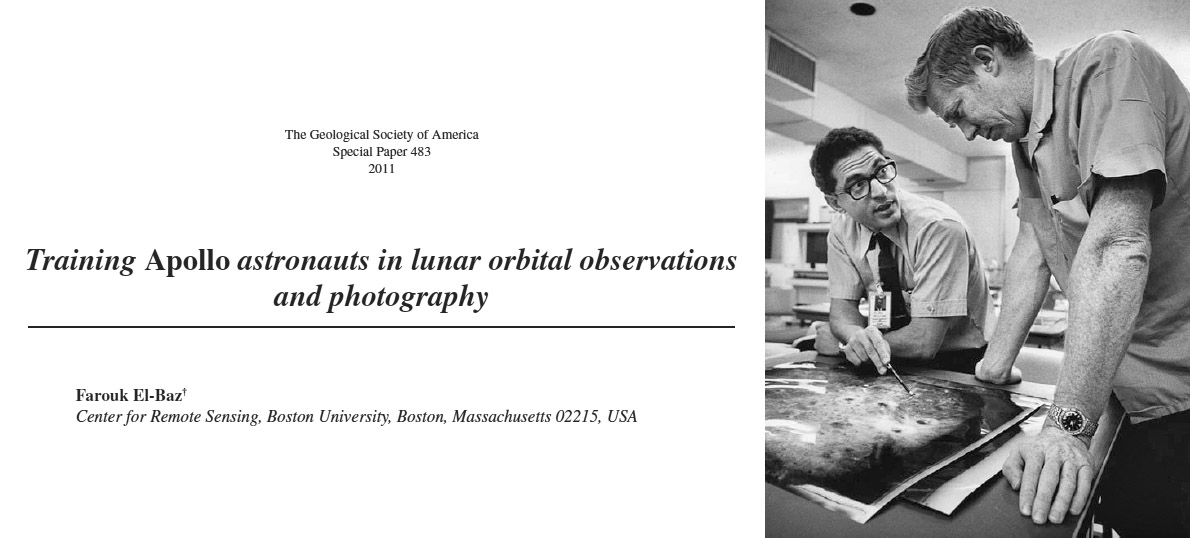Difference between revisions of "April 7, 2012"
(Created page with "__NOTOC__ =Learning To See From Lunar Orbit= <!-- ws:start:WikiTextHeadingRule:0:<h1> --> <!-- ws:start:WikiTextLocalImageRule:6:<img src="/file/view/LPOD-Apr...") |
(No difference)
|
Revision as of 17:54, 1 January 2015
Learning To See From Lunar Orbit

image of Farouk El-Baz and Stuart Roosa from El Baz (2011) (GSA SP-483
The Geological Society of America has recently published a volume called Analogs for Planetary Exploration that includes a number of papers about terrestrial analogs - my favorite is the Pinacate Volcanic Field where I did my MS thesis. Also included in the volume are a few short histories of astronaut training, including a chapter on geologic field training for the Apollo astronauts. LPOD readers may be most interested in the chapter by Farouk El-Baz on the training of the Apollo Command Module Pilots (CMP) to make geologically useful observations of the lunar terrain as seen from orbit. Farouk describes how he hooked astronauts on the value of careful observation. He started by getting Ken Mattingly, the CMP for the upcoming Apollo 13, to recognize the landmarks needed for accurate landing. Ken ended up getting fascinated by the geology and gave names to features - such as Cone crater - to help remember them, and that was also the beginning of widespread use of astronaut-given informal names. Mattingly later told Farouk, The lessons you taught us about how to see, rather than look, have stayed with me and proven to be useful whenever I was overwhelmed by a mass of apparently disorganized data. You provided the background that allowed us to appreciate the complexity of the extraterrestrial geology problem. Of course, this is exactly the goal for each LPOD - to help see and understand the lunar surface.
Chuck Wood
Related Links
COMMENTS?
Click on this icon File:PostIcon.jpg at the upper right to post a comment.



